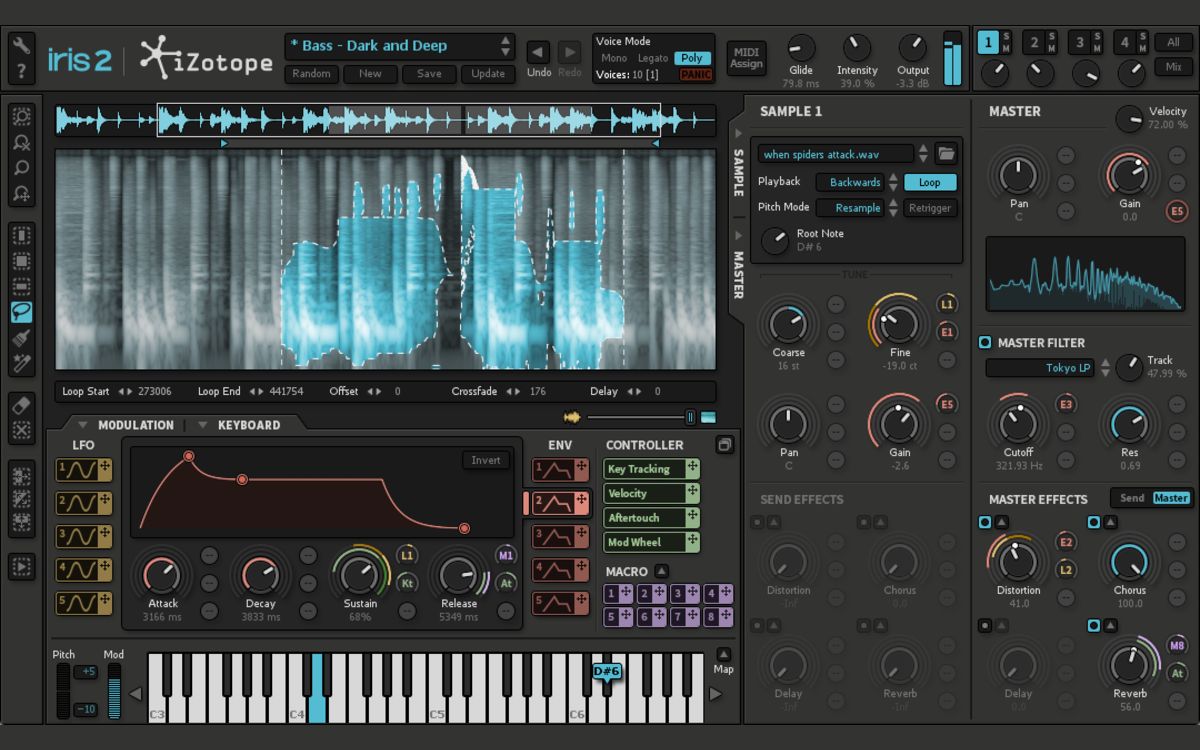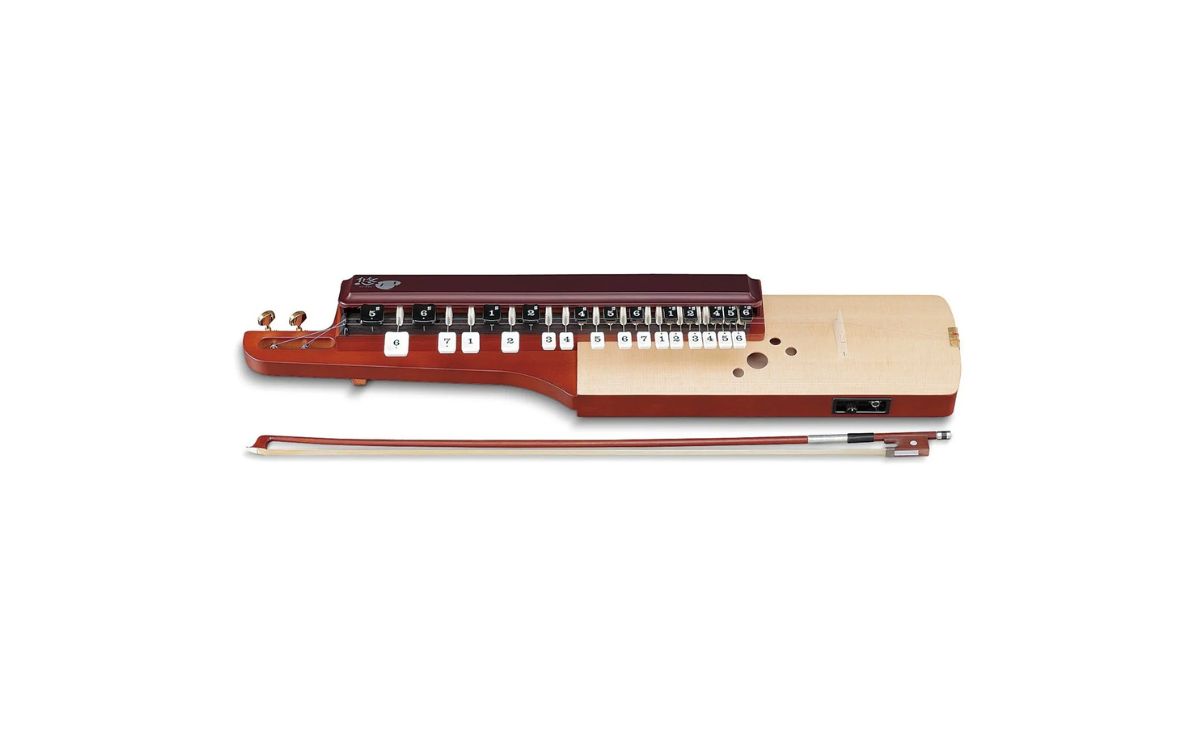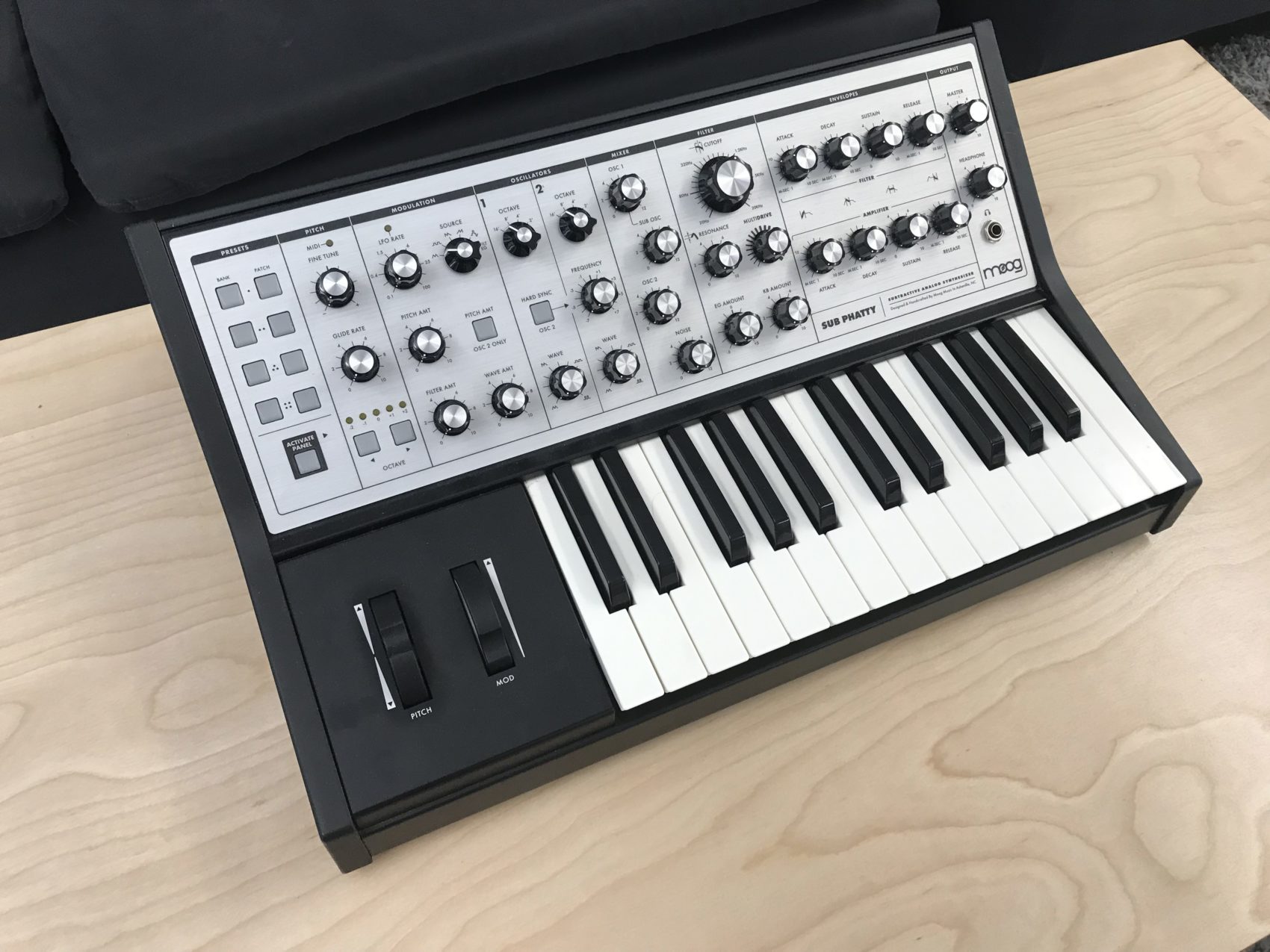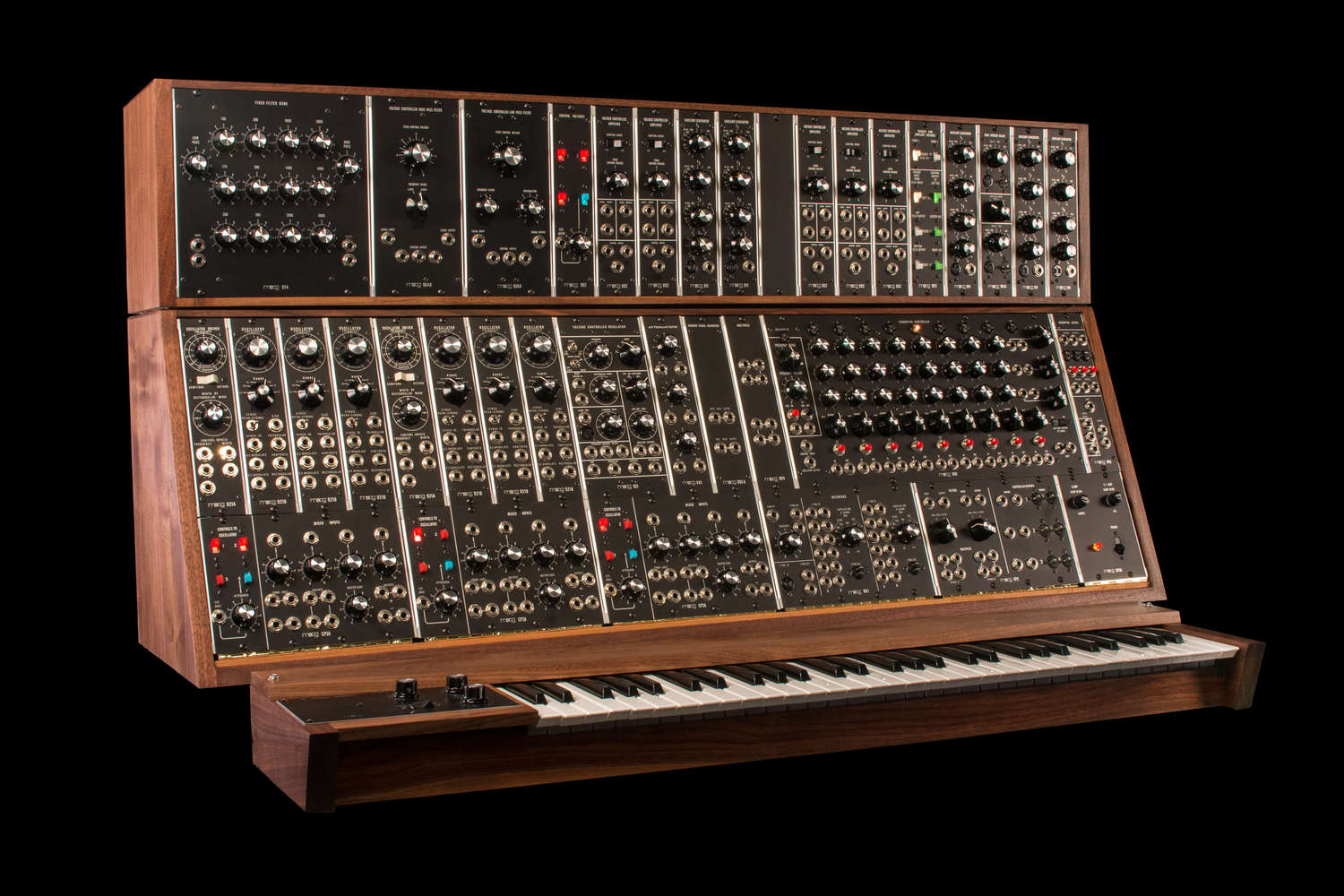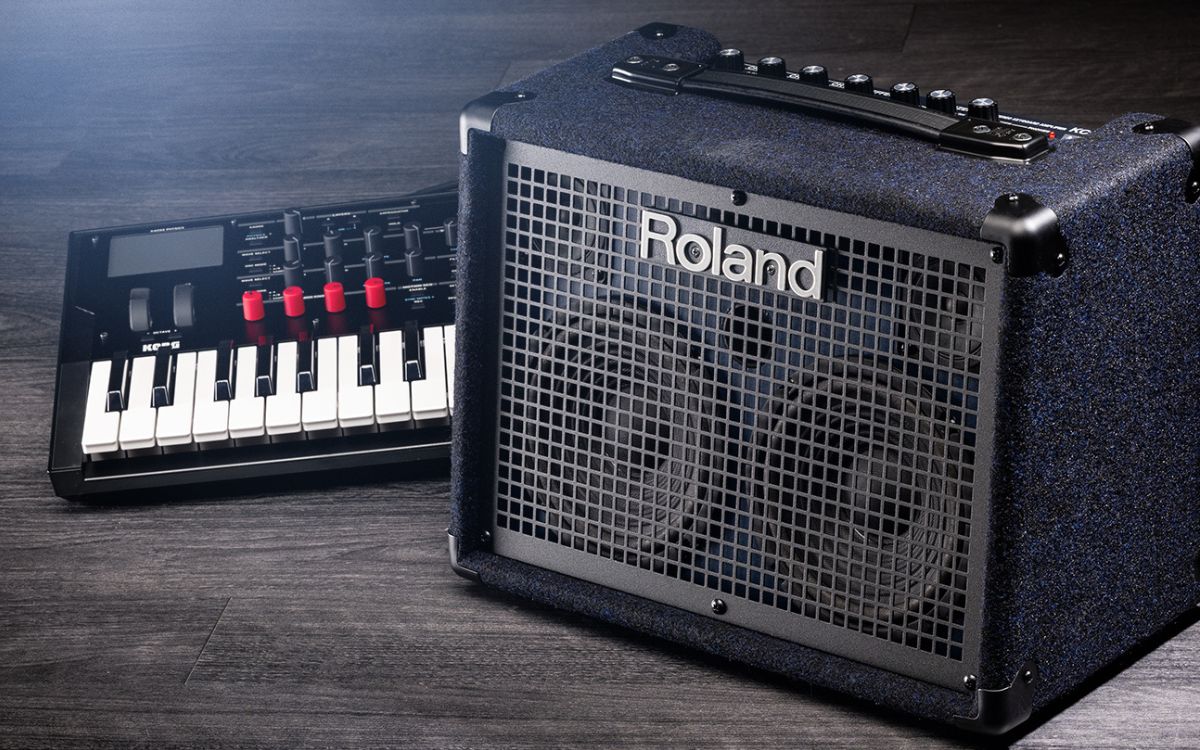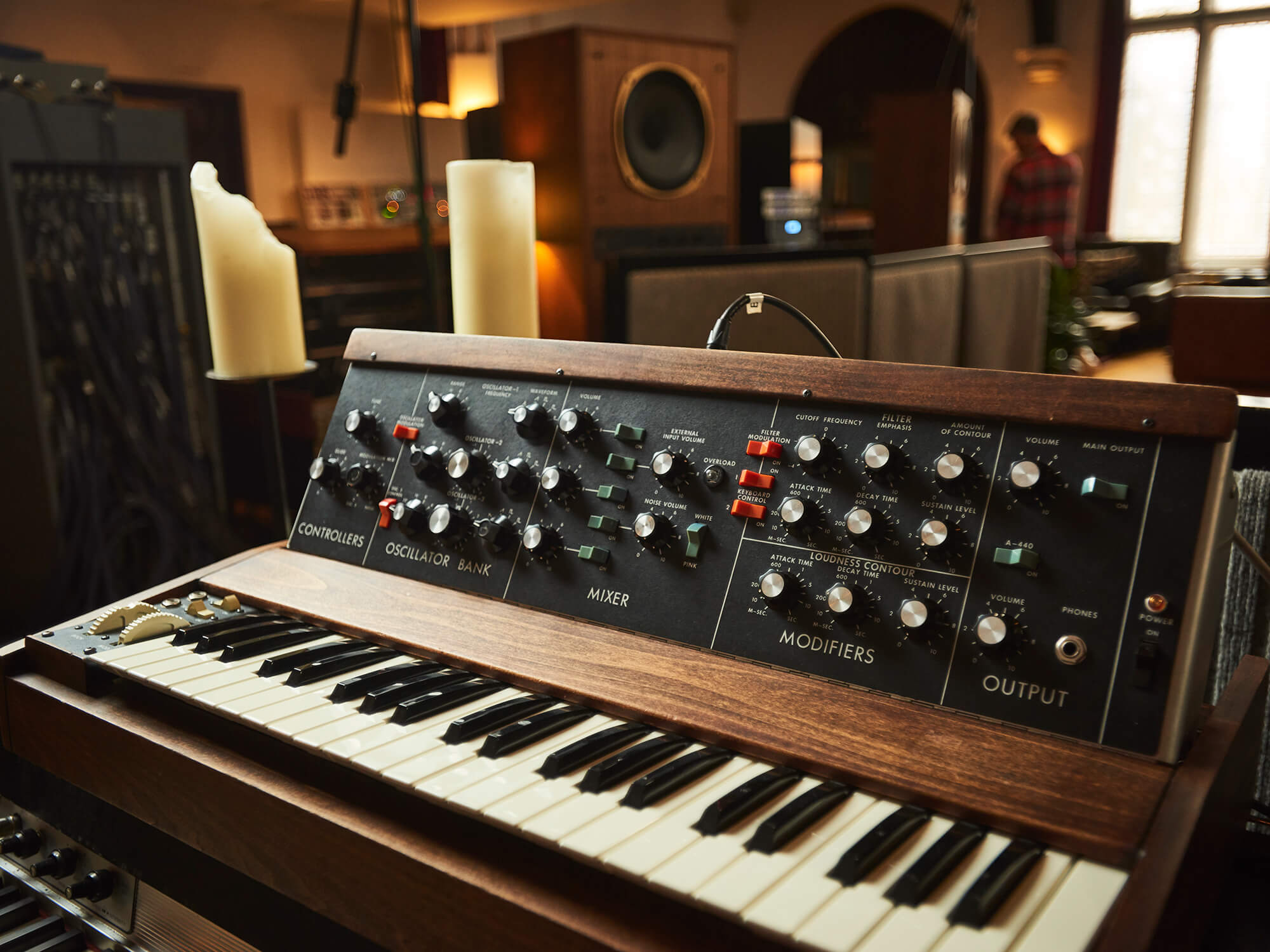Home>Instruments>Synthesizer>A Synthesizer Is An Example Of What Type Of Instrument
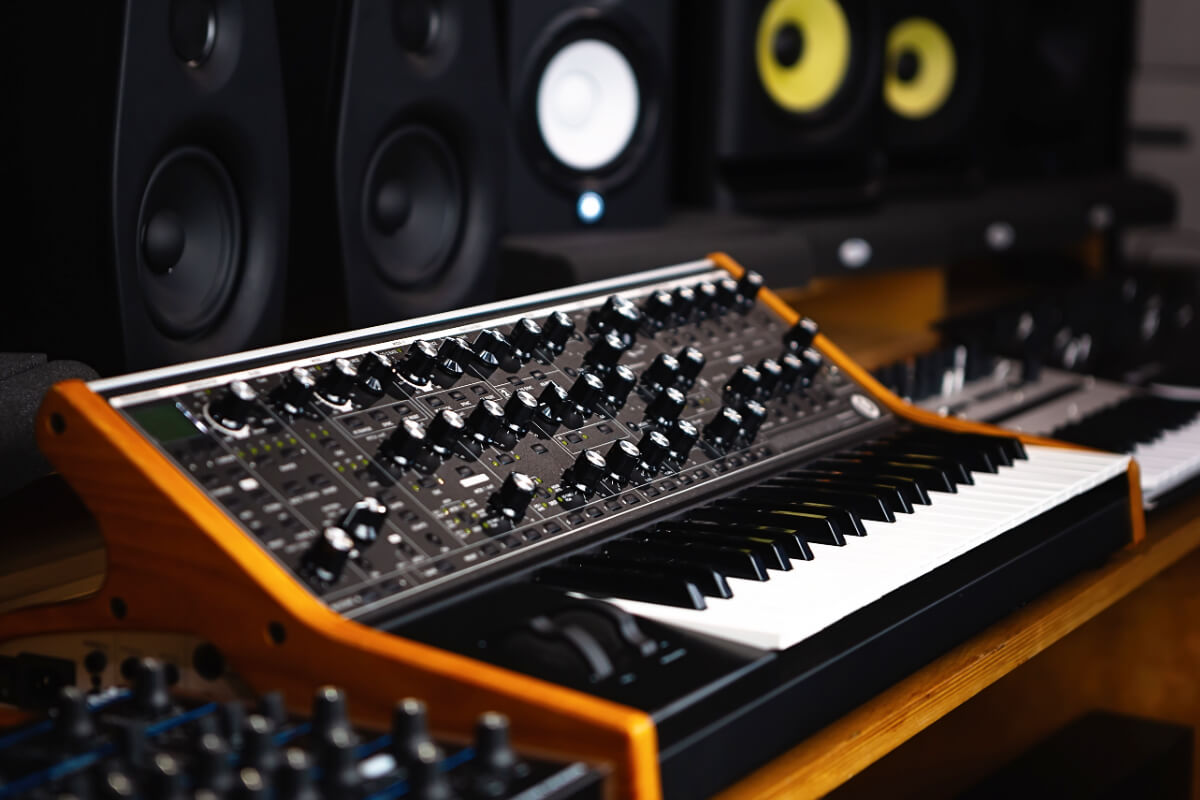

Synthesizer
A Synthesizer Is An Example Of What Type Of Instrument
Modified: February 19, 2024
A synthesizer is a type of electronic musical instrument that generates and manipulates sounds, using different techniques such as subtractive synthesis, frequency modulation, and sampling.
(Many of the links in this article redirect to a specific reviewed product. Your purchase of these products through affiliate links helps to generate commission for AudioLover.com, at no extra cost. Learn more)
Table of Contents
Introduction
Welcome to the world of synthesizers! These fascinating and versatile musical instruments have revolutionized the way we create and experience music. From the iconic sounds of electronic pioneers like Kraftwerk and Pink Floyd to the modern-day hits of pop, hip-hop, and EDM, synthesizers have played a prominent role in shaping the sonic landscape of contemporary music.
But what exactly is a synthesizer? In simple terms, a synthesizer is an electronic instrument that generates and manipulates sound. It offers musicians and producers a wide range of options for creating and shaping unique sounds that cannot be reproduced by traditional instruments.
Synthesizers are a prime example of the advancements in technology that have transformed the music industry. They have evolved from bulky and expensive modular systems in the 1960s to compact, portable, and affordable units that are accessible to aspiring musicians and professionals alike.
In this article, we will delve into the world of synthesizers, exploring their different types, characteristics, components, working principle, and applications. Whether you are a seasoned musician or a curious enthusiast, this article will serve as a comprehensive guide to understanding the incredible capabilities and possibilities that synthesizers offer.
Definition of a Synthesizer
A synthesizer is an electronic musical instrument that generates sound by combining and manipulating different audio signals. Unlike traditional instruments such as pianos or guitars, which produce sound mechanically, synthesizers use electronic circuits to create and modify sounds.
At its core, a synthesizer is essentially a powerful sound generator. It can produce a wide range of sounds, from traditional instrumental sounds like piano, strings, and brass, to more abstract and experimental tones that push the boundaries of traditional musical expression.
The term “synthesizer” comes from the word “synthesize,” which means to combine or create something new. And that’s exactly what a synthesizer does – it synthesizes sounds. By manipulating different parameters such as pitch, waveform, volume, and filters, synthesizers allow musicians and producers to shape and customize their sounds to create unique and distinct sonic palettes.
One of the defining features of a synthesizer is its ability to generate sounds that would be impossible or difficult to produce with traditional instruments. This includes sounds like sweeping pads, futuristic leads, complex textures, and rhythmic sequences. Synthesizers offer a limitless palette of sonic possibilities, making them a favorite tool for musicians across various genres.
Synthesizers also offer flexibility and versatility. They can mimic the sounds of traditional instruments, giving musicians the ability to replicate orchestral sounds, pianos, and guitars with remarkable precision. But they can also go beyond traditional sounds, enabling musicians to explore new sonic territories and create sounds that are entirely unique to the synthesizer.
It’s important to note that in the world of synthesizers, there is a wide range of instruments that fall under the umbrella term. From hardware synthesizers with physical knobs and keys to software synthesizers that run on computers, there are countless options available to suit different preferences and needs.
Now that we have a general understanding of what a synthesizer is, let’s explore the different types of synthesizers and the unique characteristics that set them apart.
Types of Instruments
Synthesizers come in various types, each with its own unique features and sonic capabilities. Let’s take a closer look at some of the most common types of synthesizers:
- Analog Synthesizers – Analog synthesizers are the predecessors of modern-day digital synthesizers. They use electronic circuits and voltage-controlled oscillators (VCOs) to generate sounds. Analog synthesizers are known for their warm and rich tones, as well as their ability to create complex and evolving sounds through modulation and filtering.
- Virtual Analog Synthesizers – Virtual analog synthesizers, also known as software synthesizers or VST plugins, emulate the sound and characteristics of analog synthesizers using digital technology. They offer the flexibility and convenience of software while delivering analog-like sounds and functionality. Virtual analog synthesizers have become increasingly popular due to their affordability and accessibility.
- FM Synthesizers – FM (Frequency Modulation) synthesizers use a technique called frequency modulation to generate sounds. They utilize a series of operators and modulators to create complex and evolving timbres. FM synthesizers are known for their ability to produce bright, metallic tones and intricate harmonic textures.
- Sample-based Synthesizers – Sample-based synthesizers use pre-recorded sounds, known as samples, as the basis for sound generation. These samples can be recordings of real instruments, vocals, or any other sound source. Sample-based synthesizers offer a wide range of realistic and natural-sounding instruments, making them popular in genres such as electronic music, film scoring, and production.
- Wavetable Synthesizers – Wavetable synthesizers utilize wavetables, which contain a series of sampled waveforms. These waveforms can be manipulated and morphed together to create dynamic and evolving sounds. Wavetable synthesizers are known for their ability to generate complex and evolving timbres, making them popular among sound designers and electronic musicians.
These are just a few examples of the different types of synthesizers available. Each type has its own sonic characteristics and capabilities, allowing musicians and producers to explore a vast sonic landscape and create unique musical expressions.
Now that we have a better understanding of the different types of synthesizers, let’s dive into the characteristics that make synthesizers stand out from other instruments.
Characteristics of a Synthesizer
Synthesizers possess several key characteristics that set them apart from other musical instruments. Understanding these characteristics is vital in harnessing the full potential of a synthesizer. Here are some of the notable characteristics:
- Sound Design Flexibility: One of the standout features of a synthesizer is its unparalleled ability to shape and design sounds. With parameters such as oscillators, filters, envelopes, and modulation options, synthesizers allow users to create and manipulate a wide range of sounds, from simple tones to complex and evolving textures.
- Modulation Capabilities: Synthesizers excel at modulation, which is the process of dynamically altering sound parameters over time. By modulating parameters such as pitch, amplitude, and filter cutoff, synthesizers can produce expressive and dynamic sounds. This modulation can be achieved through various techniques, including LFOs (Low-Frequency Oscillators), envelopes, and complex modulation routing options.
- Polyphony: Synthesizers can offer polyphonic capabilities, meaning they can play multiple notes simultaneously. This allows for the creation of chords and harmonies, making synthesizers suitable for both melodic and harmonic composition.
- Sound Manipulation: Synthesizers provide an array of tools to manipulate sounds. This includes techniques like filtering, which allows users to shape the frequency content of the sound; effects processing, such as reverb and delay, which add depth and ambiance to the sound; and spatialization, which creates a sense of stereo width and three-dimensionality.
- Real-time Control: Many synthesizers are equipped with physical controls, such as knobs, sliders, and buttons, that provide real-time control over various parameters. This hands-on approach allows musicians to shape and mold sounds on the fly, creating dynamic and expressive performances.
- Integration with External Devices: Synthesizers often feature connectivity options that allow them to integrate with external devices. This can include MIDI (Musical Instrument Digital Interface) to connect with other MIDI-compatible instruments and devices, as well as CV (Control Voltage) connectivity to interface with modular synthesizers and other analog gear.
These characteristics make synthesizers a versatile tool for musicians, sound designers, and producers. They enable users to explore new sonic possibilities, push the boundaries of traditional music, and create unique and captivating compositions.
Next, we’ll delve into the components that make up a synthesizer and contribute to its sonic palette.
Components of a Synthesizer
A synthesizer consists of several key components that work together to generate and shape sounds. Understanding these components is essential for utilizing a synthesizer to its fullest potential. Here are the main components found in most synthesizers:
- Oscillators: Oscillators are the sound sources in a synthesizer. They generate electrical waveforms, such as sine, sawtooth, square, and triangle waves, which serve as the foundation for the sound. With control over parameters like pitch and waveform shape, oscillators allow users to create a wide range of tones and textures.
- Filters: Filters shape the frequency content of a sound by selectively allowing certain frequencies to pass while attenuating others. Common filter types include low-pass, high-pass, band-pass, and notch filters. By manipulating filter parameters such as cutoff frequency and resonance, users can sculpt the timbre and texture of the sound.
- Amplifiers: Amplifiers control the volume and dynamics of the sound. They shape the attack, decay, sustain, and release of the sound envelope using envelopes or ADSR (Attack, Decay, Sustain, Release) controls. This component determines how the sound evolves over time, from the initial attack to the eventual fade-out.
- Modulators: Modulators introduce changes to sound parameters over time, adding movement and variability to the sound. LFOs (Low-Frequency Oscillators) are commonly used as modulators, controlling parameters like pitch, filter cutoff, or amplitude at a slower rate. This creates effects such as vibrato, tremolo, and rhythmic modulation.
- Effects Processors: Effects processors enhance and shape the sound by adding various audio effects. Common effects found in synthesizers include reverb, delay, chorus, flanger, and distortion. These effects can be used to add depth, space, movement, or to transform the sound into something completely different.
- Controllers: Synthesizers often have physical controls, such as knobs, sliders, and buttons, that provide hands-on control over various parameters in real-time. These controllers allow users to interact with the synthesizer intuitively and shape the sound dynamically during performances or studio sessions.
These components work together in a synthesizer to generate, shape, and manipulate sound. The user’s interaction with these components, along with their understanding of synthesis techniques, allows for endless creative possibilities and empowers them to craft unique and expressive musical compositions.
Now that we have examined the key components of a synthesizer, let’s explore the working principle behind synthesizers and how sound is generated in these powerful instruments.
Working Principle of a Synthesizer
The working principle of a synthesizer involves a combination of electrical circuits, control parameters, and sound generation techniques. By understanding how these elements work together, we can grasp the concept behind synthesizers and their ability to generate a wide range of sounds.
At its core, a synthesizer operates on the principle of sound synthesis, which involves combining different audio signals to create new sounds. The basic signal flow in a synthesizer involves the following steps:
- Sound Generation: The first step is to generate a primary audio signal using oscillators. Oscillators produce waveforms that serve as the foundation for the sound. These waveforms can be basic shapes like sine, square, sawtooth, or triangle waves.
- Signal Manipulation: Once generated, the audio signal goes through various manipulations to shape its characteristics. This can involve applying filters to control the frequency content of the sound, adjusting the amplitude with amplifiers, or introducing modulation to create movement and variation in the signal.
- Effects Processing: After undergoing manipulation, the audio signal can be routed through effects processors. These processors add depth, space, or creative alterations to the sound by applying effects such as reverb, delay, distortion, and more, according to the user’s preferences.
- Control Parameters: Synthesizers provide control parameters that allow users to dynamically adjust various aspects of the sound. This includes parameters like pitch, filter cutoff, modulation speed, and more. Real-time control options like knobs, sliders, and buttons provide an intuitive means for users to shape the sound during performances or studio work.
- Integration with External Devices: Many synthesizers offer integration options with external devices. This can include MIDI connectivity, enabling users to control the synthesizer with a MIDI controller or sequence it with a MIDI sequencer. Additionally, CV connectivity allows for integration with modular synthesizers and other analog gear, expanding the sonic capabilities of the synthesizer.
By adjusting these various parameters and utilizing different techniques, musicians and sound designers can create an endless array of sounds and textures. This working principle provides the foundation for the sonic versatility and creative possibilities offered by synthesizers.
Next, let’s explore the different methods of sound generation used in synthesizers, which contribute to the unique tonal palette of these instruments.
Sound Generation in a Synthesizer
Sound generation in a synthesizer involves the creation of audio signals that serve as the basis for the sound produced by the instrument. Synthesizers utilize various methods and techniques to generate and manipulate these signals, providing musicians with a wide range of sonic possibilities. Here are some common methods of sound generation in synthesizers:
- Oscillators: Oscillators are essential for sound generation in synthesizers. They produce electrical waveforms, such as sine, square, sawtooth, or triangle waves. By adjusting parameters like pitch, waveshape, and detuning, oscillators create the basic tonal foundation of the sound. Multiple oscillators can be used to create more complex and layered sounds.
- Noise Generators: Noise generators produce random signals that add texture and character to the sound. White noise, for example, consists of a random mixture of frequencies and can be used to create percussive sounds or add a sense of atmosphere. Different types of noise, like pink noise or brown noise, offer unique timbral characteristics.
- Sample Playback: Some synthesizers incorporate sample playback as a method of sound generation. Samples are pre-recorded sounds that can be triggered and manipulated in various ways. This method allows for realistic instrument emulations or the inclusion of non-traditional sounds into the synthesizer’s palette.
- Frequency Modulation (FM): FM synthesis involves using one oscillator (the carrier) to modulate the frequency of another oscillator (the modulator). This technique creates complex and harmonically rich sounds. By altering the frequency and modulation depth, FM synthesis allows for a wide range of tonal variations and timbres.
Once the initial sound signal is generated, it undergoes further manipulation and processing to shape its characteristics. This can include filtering to control the frequency content of the sound, envelope shaping to control its amplitude and dynamics over time, and modulation to add movement and variability. Additionally, effects processors can be applied to further enhance the sound with reverbs, delays, choruses, and other audio effects.
Through the combination of these sound generation methods and subsequent manipulation, synthesizers offer musicians and producers an extensive sonic palette to explore and express their creativity. The ability to shape and customize the sound from its initial generation is a hallmark feature of synthesizers.
Now that we have explored sound generation in synthesizers, let’s discover the diverse applications of these powerful instruments.
Applications of Synthesizers
Synthesizers have a wide range of applications across various musical genres, as well as in other creative fields. Let’s explore some of the most common applications of synthesizers:
- Music Production and Composition: Synthesizers are fundamental tools for music producers and composers. They offer endless possibilities for creating unique sounds, whether it’s crafting realistic instrument emulations, designing futuristic electronic tones, or experimenting with abstract and atmospheric textures. From pop and EDM to film scoring and sound design, synthesizers add depth, character, and sonic innovation to music productions.
- Live Performances: Synthesizers have become essential instruments for live performances. With real-time controls and the ability to create dynamic and evolving sounds, synthesizers allow performers to adapt their sound on stage and create captivating performances. From solo acts to full bands, synthesizers bring an additional level of excitement and expressiveness to live music.
- Sound Design: Synthesizers are widely used in sound design for various media, including films, TV shows, video games, and advertisements. Their ability to generate unique and otherworldly sounds allows sound designers to bring imagination to life. Whether it’s creating sound effects, atmospheric textures, or futuristic soundscapes, synthesizers are indispensable tools for shaping the sonic world of visual media.
- Educational Tools: Synthesizers serve as valuable educational tools for learning about music theory, sound synthesis, and electronic music production. They provide hands-on experience in understanding the principles of sound and music, allowing students to explore different sound design techniques and develop their creativity.
- Experimental and Avant-garde Music: Synthesizers have long been embraced by experimental and avant-garde musicians, pushing the boundaries of traditional music. With their ability to create unique and unconventional sounds, synthesizers provide a platform for sonic exploration and the creation of groundbreaking and boundary-pushing compositions.
- Home Recording Studios: Synthesizers are common fixtures in home recording studios, allowing musicians and producers to create professional-quality music from the comfort of their own space. Whether used as standalone instruments or connected to computer-based recording setups, synthesizers offer a wealth of sonic possibilities and enhance the production value of home recordings.
The versatility and adaptability of synthesizers make them indispensable tools in the music industry and beyond. Their impact can be felt in a wide array of creative disciplines, from mainstream music production to cutting-edge experimental art. With their ability to shape and sculpt sounds, synthesizers enable artists and creators to bring their visions to life and captivate audiences.
Now that we have explored the applications of synthesizers, let’s summarize our findings.
Conclusion
Synthesizers have revolutionized the realm of music production, composition, and sound design. These remarkable instruments offer a plethora of sonic possibilities, empowering musicians, producers, and sound designers to create unique and expressive sounds that cannot be replicated by traditional instruments.
From analog synthesizers to virtual analog, FM, wavetable, and sample-based synthesizers, there are various types to suit different musical preferences and creative needs. Each type brings its own sonic characteristics and capabilities, providing a diverse range of sounds for artists to explore.
The components of a synthesizer, including oscillators, filters, amplifiers, modulators, effects processors, and real-time control options, contribute to the instrument’s versatility and flexibility. These components allow for sound manipulation, modulation, and effects processing, providing musicians with the tools to shape and craft their desired sounds in real-time.
The working principle of a synthesizer involves the generation of audio signals, either through oscillators, noise generators, sample playback, or frequency modulation. These signals are further manipulated, filtered, modulated, and enhanced to create a wide array of tones, textures, and sonic landscapes.
Synthesizers find applications in music production, live performances, sound design, education, experimental music, and home recording studios. They have become integral to the music industry and other creative fields, allowing artists to push the boundaries of traditional music and explore new avenues of sonic expression.
In conclusion, synthesizers offer unparalleled creativity, flexibility, and depth in the world of music and sound production. With their ability to generate, manipulate, and shape sounds, synthesizers continue to inspire and captivate musicians, producers, and sound designers, pushing the boundaries of musical innovation and creativity.

